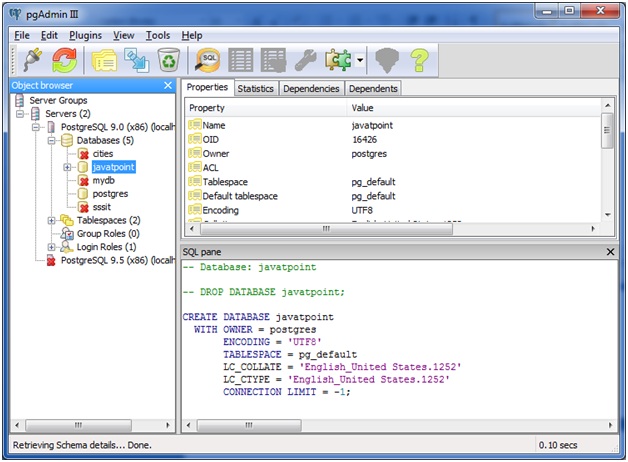

Method 2: Using PSQL The second way to create a new user in PostgreSQL is through the interactive PSQL shell.
Run the createuser command: createuserYou have successfully created a new read-only user for your database. Switch to the postgres user: sudo su - postgres 2. On the ‘Role membership’ tab add the newly create group to the ‘Member’ window > click ‘OK’. where databasename is the name of a database which you want to create. On the ‘Definition’ tab enter a secure password. After Login into postgres (psql Terminal) CREATE DATABASE databasename. Under your server tree right-click ‘Login Roles’ > select ‘New Login Role’ Step 2) In the pop-up, Enter Database Name. If your schema is not ‘public’, you will also need to grant USAGE permissions on the schema. Step 1) In the Object Tree, right click and select create a database to Postgres create database. In the ‘Privileges’ tab select the newly created group from the ‘Role’ drop-down menu > check the ‘Select’ box > click ‘Add/Change’ > click ‘OK’. On the ‘Selection’ tab click ‘Check All’. On the authentication front, the nf file controls how people can connect to the database.

PostgreSQL provides a suite of tools to control authentication and authorization. In the ‘Privileges’ tab select the newly created group from the ‘Role’ drop-down menu > check the ‘Connect’ box > click ‘Add/Change’ > click ‘OK’.Ĭlick the expand arrow next to your database > expand ‘Schemas’ > right-click ‘public’ > select ‘Grant Wizard’. Introduction Controlling what each user is allowed to do within your database is an important part of administrating a database cluster.
#Postgres create database with owner password#
You do NOT need to create a password for the Group role we will create a password for the Login role created later in this document.Įxpand ‘Databases’ > right-click on the database you would like to connect to Chartio > select ‘Properties’.
#Postgres create database with owner install#
To install Psycopg2 use the command: pip install. Give the role a descriptive name > click ‘OK’. Creating a PostgreSQL database using Python and Psycopg2: Import the Psycopg2 module inside a Python program. Connect to your PostgreSQL server instance using pgAdmin > right-click on ‘Group Roles’ and select ‘New Group Role’. Many times we need to populate and eventually share a database with dummy data, either to test our pipelines, test queries, make a demo of the operation of.


 0 kommentar(er)
0 kommentar(er)
